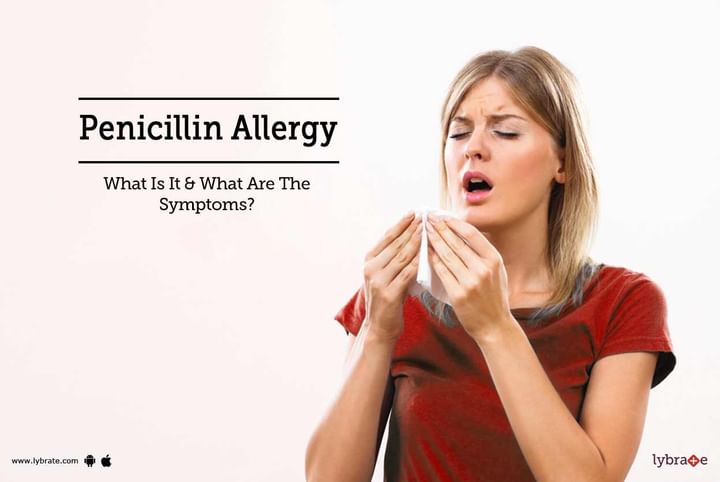Pencillin Allergy - What Is It & What Are The Symptoms?
Necessity is the mother of invention. Ironically, accidents to end up in discoveries. Sir Alexander Fleming accidentally discovered Penicillin in 1928. After many years of research and experiments, Penicillin eventually came into use during World War II. Though it’s believed to be a blessing, it has opened the doors for various allergic reactions and bacterial resistance over the period of time. About 10% of people report allergies to Penicillin, wherein more than 90% of these patients are found not to be allergic to Penicillin after skin testing.
Reactions to Penicillin:
Penicillin belongs to a family of antibiotics known as beta-lactams which also comprises of Penicillin G, Cloxacillin, Ampicillin, Amoxicillin, Piperacillin, and many more which are believed to be effective in eradicating common bacterial infections and relatively inexpensive.
The major problem in the use of Penicillin is hypersensitivity reactions. Your immune system can work wonders when encountered with any foreign body (antigen) by producing its antibody, which fights against the antigen. When your body is attacked by bacteria the lymphocytes (T-Cells) trigger the production of antibodies (immunoglobulin) to fight against the bacteria. However, in some people Penicillin administration can be considered as an invader and their immune system produces antibodies against it, thereby resulting in allergic reactions.
Acute and Sub - acute reactions:
You can observe two clinical pictures resulting from penicillin allergy:
Acute allergic reaction:
- Mediated by IgE(Immunoglobulin E) antibodies as a result of previous exposure.
- Arises immediately within minutes to an hour or two.
- Results in release of histamine and other mediators from mast cells.
Sub-Acute allergic reaction:
- Mediated by IgG (Immunoglobulin G) antibodies.
- Occurs 7 to 10 days after Penicillin treatment.
- Results in the activation of the complement reactions producing inflammation.
Risk factors for IgE mediated reaction:
- Frequent or repetitive courses of Penicillin.
- High dose parenteral (rather than oral) administration.
- A history of other allergies, such as food allergy or hay fever.
- Certain illness commonly associated with allergic drug reactions, such as infection with HIV or Epstein - Barr virus.
Watch out for:
While people are taking a Penicillin medication several different rashes can appear:
- Hives:
- Suggest a true allergy.
- Raised and intensely itchy spots.
- Come and go over hours.
- Occur with other allergic symptoms like wheezing or swelling of the skin or throat.
- Rashes:
- Typically start after several days of treatment.
- Flat, blotchy and non-itchy.
- Spread over days but do not change by the hour.
- Unlikely to be the result of a dangerous allergy.
- Anaphylaxis:
- Very rare but life-threatening condition.
- Causes the widespread dysfunction of the body systems.
- Signs and symptoms of anaphylaxis include:
- Itching of soft palate
- Nausea, vomiting
- Sub sternal pressure
- Shortness of breath
- Hypotension
- Urticaria
- Laryngeal edema
- Bronchospasm
- Cardiac arrhythmias
- Diarrhea
Other conditions resulting from Penicillin allergy:
- Serum sickness
- Drug induced anemia
- Drug reaction with eosinophilia and systemic symptoms(DRESS)
- Inflammation of the kidneys (nephritis)
In case you have a concern or query you can always consult an expert & get answers to your questions!



+1.svg)
